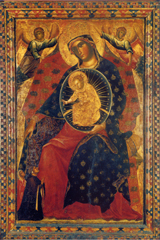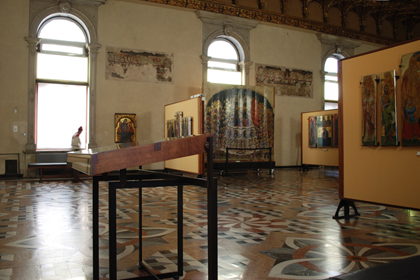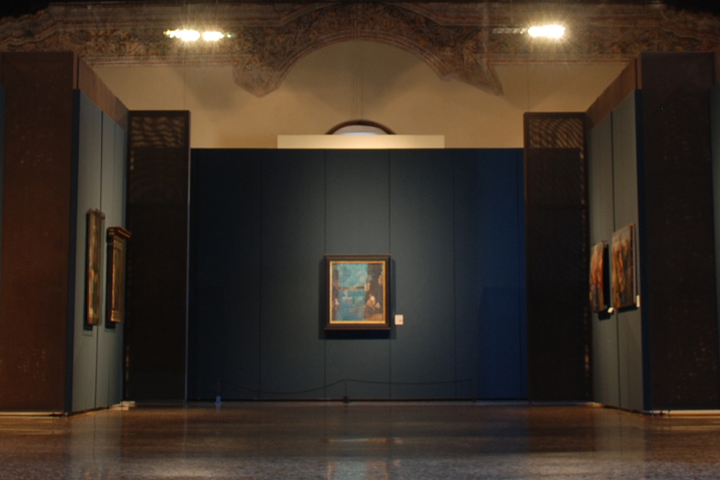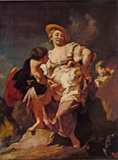GALLERIE DELL'ACCADEMIA (ALLESTIMENTO CARLO SCARPA 1959), VENEZIA, Ph.2015
"All’Accademia veneziana veniva (1807) imposto il trasferimento in quel complesso di edifici comprendente il convento dei Canonici Lateranensi, progettato nel 1561 da Andrea Palladio, la chiesa della Caritŕ, ricostruita da Bartolomeo Bon tra il 1442 il 1452 e la Scuola della Caritŕ, forse la prima delle Scuole Grandi veneziane, fondata nel 1260. (…) Il 10 Agosto 1817 la pinacoteca venne aperta per un breve periodo" G. Nepi Scirč, 1985
"Nel 1882 veniva sancita la definitiva autonomia delle raccolte dalla scuola e dall'Accademia. Un radicale riordino della pinacoteca fu attuato nel 1895 dal direttore Giulio Cantalamessa, che per primo riorganizzň la sequenza espositiva secondo una successione cronologica."www.gallerie accademia.org
A partire dal 2005, "si č potuto procedere all'intervento di restauro completo del Complesso della Caritŕ. Il progetto prevede l'ampliamento degli spazi espositivi da 5000 a 12000 mq circa."www.gallerieaccademia.org
A partire dal 2005, "si č potuto procedere all'intervento di restauro completo del Complesso della Caritŕ.Il progetto prevede l'ampliamento degli spazi espositivi da 5000 a 12000 mq circa." www.gallerieaccademia.it
"in 1944 Vittorio Moschini engaged Scarpa to reorganize the Venetian museum - one of the first to be updated - according to modern curatorial standard.
He guides the visitor by the hand, pushing the didactic principle expressed by the museum to its extreme.
For Scarpa, tool of design were absolutely indispensable both for formulating a judgement with respect to the works exhibited, and for constructing his museum spaces" O. Lanzarini, 2016
"For Scarpa, tool of design were absolutely indispensable both for formulating a judgement with respect to the works exhibited, and for constructing his museum spaces" O. Lanzarini, 2016























